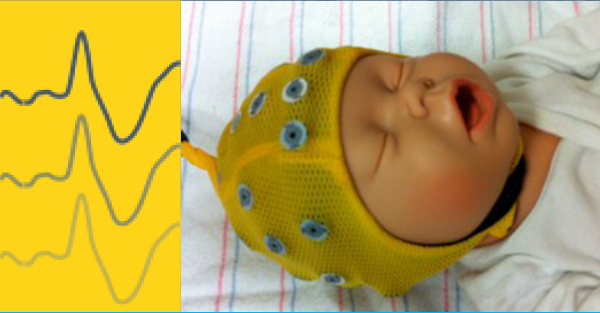Brain Activity during Anesthesia in Infants and Children | Overview
We are conducting an investigation of the effects of general anesthesia on infants’ brains that could help to improve clinical outcomes.
General anesthetics are given to patients of all ages to block pain and awareness during surgery. Research has shown us how general anesthetics work on the brain in older children and adults, but we want to know how they act on the brain in infants.
What does the study involve?
We use non-invasive clinical tools to look at brain activity in children while they require general anesthesia for surgery.
Brain monitoring is routinely used for clinical and research purposes. By using technology such as electroencephalography (or EEG) we can place tiny sensors onto the head that allow us to look at patterns of electrical brain activity.

We collect information on heart rate, blood pressure, oxygen saturation using clinical monitors in the operating room. This information allows us to compare how brain activity and clinical signs change during anesthesia.
With our colleagues from the Optics Division at MGH, we have developed technology that combines EEG with near infrared spectroscopy (or NIRS). NIRS is a non-invasive technique that uses low intensity light to measure oxygen consumption. Together, these technologies can be used for continuous brain monitoring of electrical and metabolic activity in children.
In collaboration with the Neuroscience Statistics Lab at MIT, we apply advanced statistical approaches and signal processing algorithms to model measures of brain activity.
Why participate?
This investigation aims to help understand how:
- the brain normally responds to general anesthetics
- the infant brain develops
- to improve anesthetic care during surgery for infants in the future
We would love to hear from you! Feel free to contact us for more information
Research Contact: Laura.Cornelissen@childrens.harvard.edu
